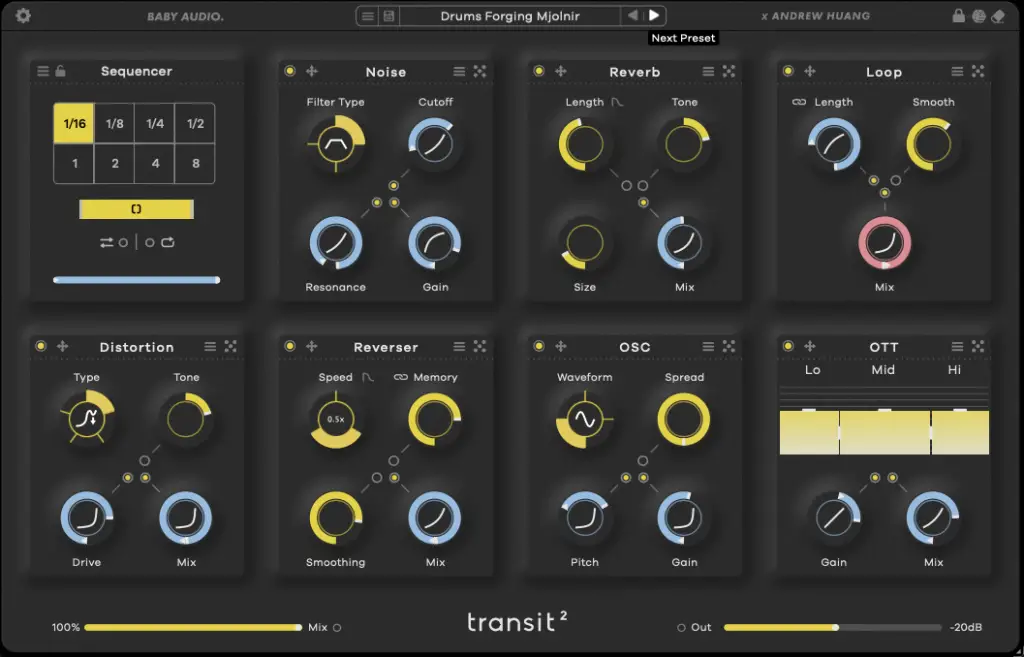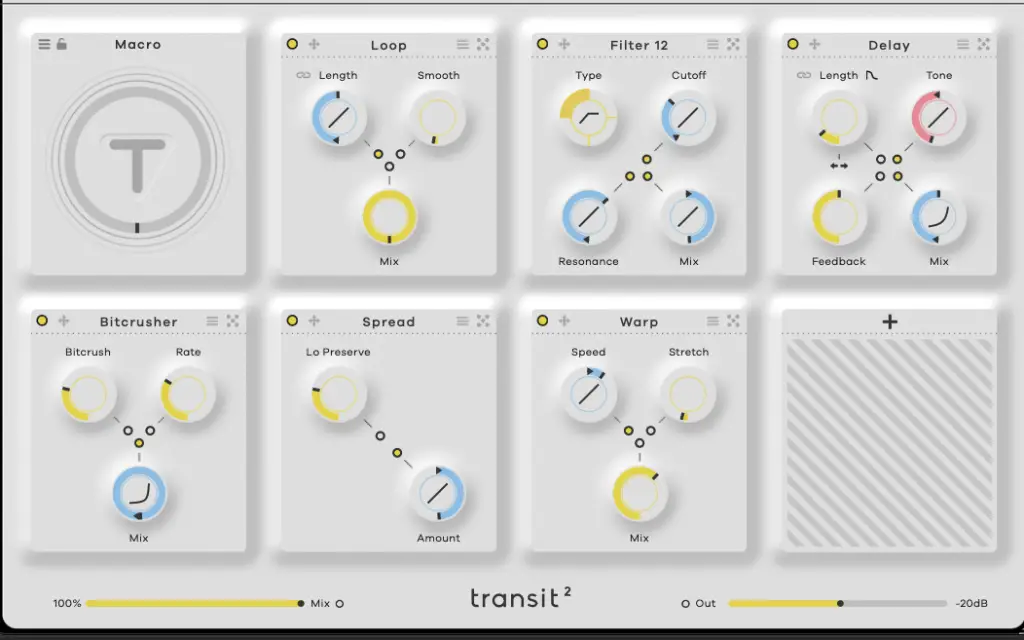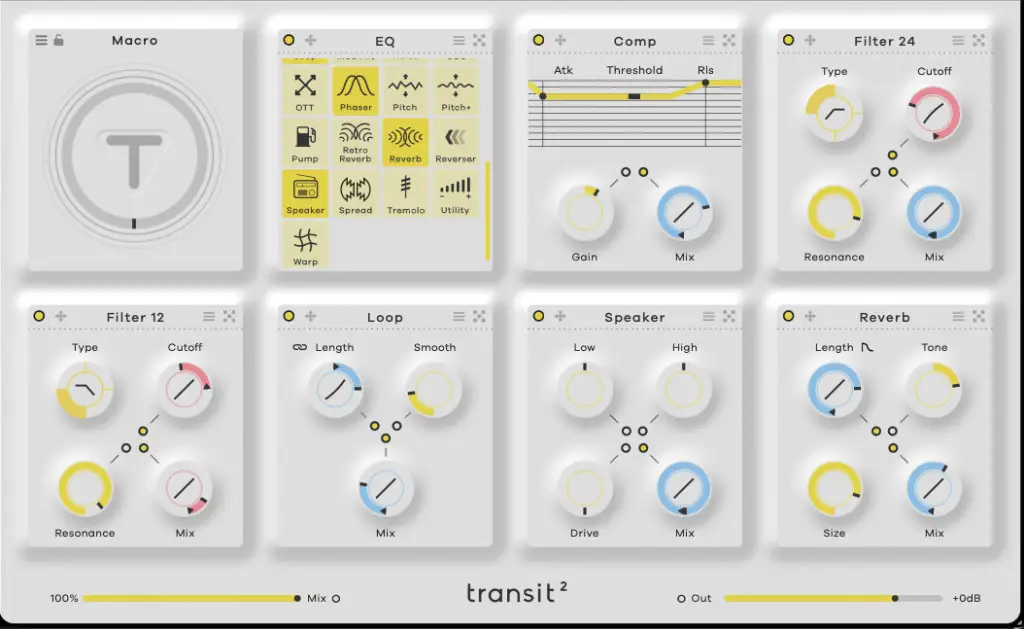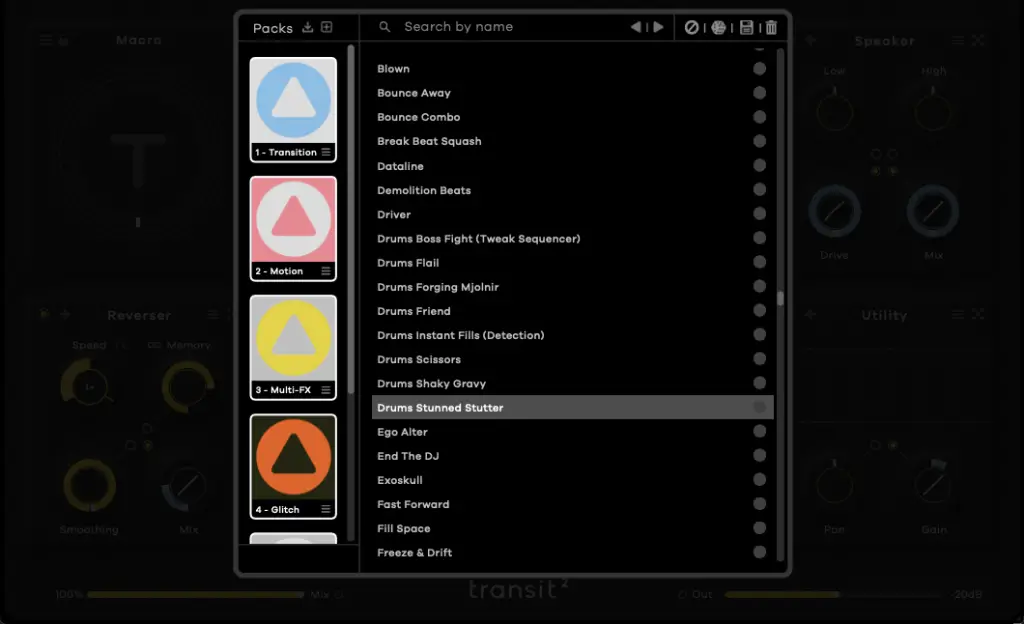Table of Contents
We’ve all been there—staring at a mix that feels flat and lifeless, knowing it needs more energy but not quite sure how to pull it off. You could spend hours painstakingly setting up automation, stacking plugins, and tweaking settings, or you could use something like Transit 2 and get the job done in minutes. I’m not exaggerating when I say this plugin is a game-changer for transitions, motion, and adding that extra spark to a track.
When Baby Audio dropped Transit 2, I was into it, mostly because I’d already seen how the first version turned out to be way more versatile than its “transition plugin” label suggested. Version two doesn’t just add some bells and whistles—it legitimately upgrades the whole experience with new motion modes, more effects, and better workflow options.
[embed]https://youtube.com/watch?v=um_Z-51nGP4&si=3lOTxHWwC7ebN5M8[/embed]After using it, I can confidently say it’s one of the most fun and practical plugins I’ve worked with in a while and that’s even considering the last plugin BA dropped a couple months ago, Humanoid. That said, it’s not perfect, and I’ll get into why later, but overall, Transit 2 is a tool I think most producers will find useful.
What is Transit 2?

To put it simply, Transit 2 is a motion effects plugin. It’s designed to bring life to your tracks, whether you’re crafting dramatic transitions, adding rhythmic movement, or just making your mix feel more dynamic. The setup is straightforward: you load up to seven effects into its slots, and then use motion modes or the Macro knob to animate them. It sounds basic, but in practice, it opens up a world of creative possibilities.
What I like most is how it caters to producers at any skill level. If you’re new to production, the 830+ presets make it easy to get started. You can load one up, tweak a few parameters, and instantly add depth and excitement to your mix. For more advanced users, the customization options are incredible—you can link multiple effects to different motion sources, tweak every parameter, and even rearrange the effects chain to suit your workflow.
But let’s be honest: the real strength of Transit 2 is how much time it saves.
Instead of opening a bunch of plugins and automating each one, you can do it all in one place. And while it’s clearly designed with electronic music in mind, I’ve found it works just as well in pop, hip-hop, and even cinematic projects. It’s one of those tools that fits into almost any workflow.
What’s New in Version 2?
For those who already own Transit 1, you’re probably wondering if the upgrade is worth it. In my opinion, it is. Baby Audio didn’t just slap on a few minor updates—they added features that significantly expand what the plugin can do.
The biggest addition is the four new motion modes: LFO, Follower, Sidechain, and Gate. These give you more ways to animate your effects, whether you want rhythmic pulsations, dynamic movement that reacts to your track, or precise, on-demand control for live performances. The Follower mode, in particular, has been a favorite of mine for making effects respond to audio levels—it adds a sense of interaction and energy that’s hard to replicate manually.
Then there are the ten new effects, bringing the total to 28.
Warp and Reverser are the show-stoppers for me. Warp is a time-stretching and pitch-shifting tool that’s great for experimental transitions, while Reverser flips bits of audio to create glitchy, unique textures. These aren’t just throwaway effects—they’re tools you’ll actually use.
With 469 new ones added to the library, there are now over 830 to choose from. While some feel a bit similar, they’re generally well-organized and make for a great starting point. If you’re upgrading, the $29 price tag might feel a bit steep given that version one came out recently, but I think the added features justify the cost.
The Six Motion Modes

If there’s one thing that sets Transit 2 apart from other plugins, it’s the motion modes. These six options are the backbone of the plugin, giving you different ways to animate your effects and keep your mix engaging.
- Macro: This is the classic, all-in-one control. You assign multiple parameters to the Macro knob, and with one sweep, you can create complex transitions or subtle movements. It’s simple, but it works.
- LFO: Perfect for creating rhythmic effects, LFO mode syncs to your track’s tempo or runs freely. It’s especially fun for modulating filters or delays.
- Follower: This mode reacts to the intensity of your track’s audio. I’ve been using it to add dynamic reverb swells to vocals—it’s an easy way to add life to otherwise static effects.
- Sidechain: Think of this as an evolution of traditional sidechain compression. It lets you create rhythmic ducking or pumping effects but with much more control and nuance.
- Gate: This is a live performer’s dream. You can trigger effects on and off in real-time, giving you instant control over motion in your set.
- Sequencer: This mode locks everything to a time-synced pattern, making it great for creating evolving builds or breakdowns.
For example, I’ve used Follower mode to create dynamic EQ changes that respond to the beat of a track, and Sequencer mode to automate delays in time with the groove. It’s like having an extra layer of creativity at your fingertips.
28 Effect Modules

Let’s talk effects.
With 28 modules to choose from, Transit 2 gives you everything from classic tools like reverb and delay to more experimental options like Warp and Analog Chorus. What’s great is that these modules can be arranged in any order, and their parameters can be linked to motion sources for added flexibility.
I’ve found myself using the new Retroverb module a lot. It adds a gritty, analog warmth that works beautifully on drums or synths. The Reverser is another favorite—it’s great for creating glitchy transitions that stand out. And Warp? Let’s just say it’s one of the most fun tools I’ve used in a while. Whether you’re stretching a vocal or pitching down a snare, it always delivers something interesting.
What I appreciate most is how easy it is to experiment. You can stack effects, link them to different motion modes, and tweak everything in real-time. It’s a sandbox for sound design, and honestly, it’s one of the reasons I’ve been reaching for Transit 2 so often.
Streamlined Workflow and Creative Efficiency

One of the things I always look for in a plugin is how much it simplifies my workflow. Transit 2 absolutely delivers on this front. Instead of juggling multiple plugins and automation lanes, you can handle everything in one place.
The Macro knob alone is a huge time-saver, letting you control multiple effects with a single movement.
The interface is another highlight. It’s clean, intuitive, and doesn’t overwhelm you with options. Whether you’re loading up a preset or building a custom chain from scratch, everything feels straightforward. And with over 830 presets to choose from, you’re never short on inspiration.
Final Thoughts
So, is Transit 2 worth it? For me, absolutely. It’s a plugin that genuinely makes production easier and more enjoyable. Sure, there are a few drawbacks—some presets feel repetitive, and the $29 upgrade fee might sting a little for recent Transit 1 buyers—but the pros far outweigh the cons.
Whether you’re crafting transitions, adding movement, or diving into sound design, Transit 2 has something to offer. It’s not just a plugin—it’s a creative tool that fits seamlessly into any workflow. If you’re on the fence, I’d recommend grabbing the free trial or taking advantage of the Black Friday sale. I don’t think you’ll regret it.
The post Transit 2 Review: Baby Audio’s Collab With Andrew Huang Is Undoubtedly An Upgrade appeared first on Magnetic Magazine.



